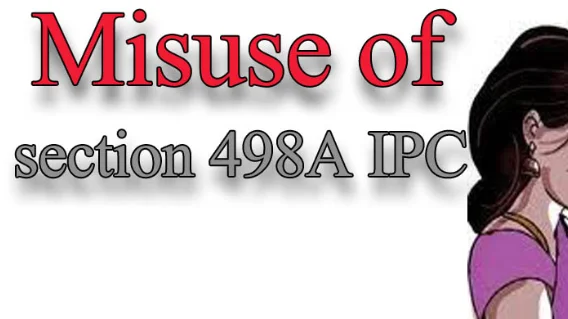Section 498 A: Cruelty Free for Women and Cruel for Men

Feb. 16, 2025 • Nandini Kumari
Student's Pen
Section 498A of the Indian Penal Code (IPC) was introduced in 1983 with the primary aim of protecting married women from cruelty at the hands of their husbands or their relatives. This provision specifically addresses both mental and physical cruelty, which is often linked to dowry harassment.
Under this section, the individuals who can be punished include the husband as well as any relatives who subject a woman to acts of cruelty. The law defines cruelty in terms of willful conduct that drives a woman to contemplate suicide or causes significant physical or mental injury. It also encompasses harassment aimed at coercing the woman or her family into fulfilling unlawful demands, particularly those related to dowry.
The punishment for such offences under Section 498A includes imprisonment of up to three years, alongside fines that are determined by the court. The nature of this offence is categorized as cognizable, meaning that police can arrest without prior approval. Additionally, it is non-bailable, indicating that bail is not automatic and is subject to the discretion of the court. Moreover, this section is non-compoundable, meaning the matter cannot be settled between the parties involved.
However, over time, concerns have been raised regarding the misuse of Section 498A. Critics argue that some women have leveraged this law to file false allegations against their husbands and in-laws for personal gain or revenge during marital disputes. In the past, due to the nature of the law as non-bailable and cognizable, arrests would often occur without sufficient verification, leading to the harassment of innocent family members, including the elderly and minors.
In some unfortunate instances, accusations under 498A have also been used as a means of extortion, where sprawling demands for financial settlements are made against the husbands during divorce proceedings. This has led to situations where entire families, including elderly parents and unmarried sisters, get implicated based on false claims.
Acknowledging these issues, the judiciary has made several observations regarding the misuse of Section 498A. In the case of Arnesh Kumar v. State of Bihar in 2014, the Supreme Court ruled that arrests in such cases should not be automatic. The Court introduced guidelines that require police to conduct preliminary inquiries before making an arrest. Similarly, in Rajesh Sharma v. State of U.P. (2017), the Supreme Court directed the establishment of Family Welfare Committees to scrutinize complaints before any police action, highlighting the importance of verification.
Furthermore, in its earlier judgments, the Supreme Court has labelled false cases under 498A as “legal terrorism”, advocating for stringent measures against such misuse. The Court also underscored the necessity for a legislative review of the section, particularly in light of the rising cases of misuse.
In response to these concerns, there have been proposals and guidelines aimed at reforming the application of Section 498A. These include the requirement for police to perform preliminary inquiries and ensure that arrests are made only in cases with credible evidence. Discussions have also emerged around the potential for making Section 498A bailable and compoundable; however, many women’s rights advocates oppose these suggestions, fearing that such changes may undermine the protections afforded to genuine victims.